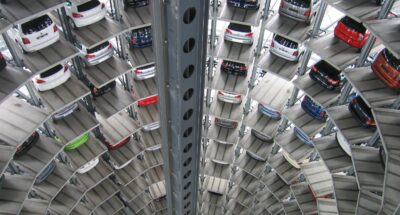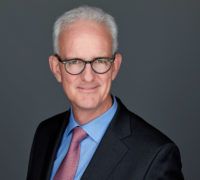
Geely: The ever-evolving business
Li Shufu, CEO and founder of Chinese carmaker Geely, overcame a host of setbacks to become the billionaire owner of a multi-faceted business ...

by James E. Henderson Published 13 June 2023 in Sustainability • 7 min read
What’s the carbon footprint of your cup of coffee?
If you’re using a Nespresso machine, one cup is equivalent to around 100g of CO2 per serving, according to the Swiss-based coffee company’s CEO Guillaume Le Cunff.
Around 70% of the carbon emissions can be attributed to the coffee beans and heating the water, he explains, whereas the capsule accounts for about 14g of CO2 per cup. This falls to 9g of CO2 if the waste coffee is recycled.
A long-time champion of sustainability, Le Cunff, who became CEO in 2020 after heading up Nespresso’s US business, is a firm believer in using facts to try and outweigh emotions – particularly when it comes to Nespresso’s capsules, which have attracted the ire of environmentalists due to the amount of waste they generate.
“When I joined Nespresso in 2007, I thought the capsules were a problem, and they became a solution for me,” he told an executive audience at IMD.
Le Cunff argues the carbon footprint of a single-serve Nespresso Original capsule – which contains 5-6g of coffee – is lower than filter coffee or a fully automatic coffee machine. This is because, among other factors, the capsule uses a smaller volume of coffee, and less energy, as the machine only heats the water required for each serving.
His comments are backed up by researchers at the University of Quebec who found that capsuled coffee was greener than filter coffee when looking at the whole life cycle. When consumers use the recommended amounts of coffee and water, however, soluable coffee appears to be more environmentally friendly.
And what about the waste generated by capsules? While Nespresso says almost 90% of its customers have access to recycling, it estimates its global recycling rate is only around 30%.
When I joined Nespresso in 2007, I thought the capsules were a problem, and they became a solution for me- Chief Executive Guillaume Le Cunff of Nespresso.
Le Cunff, a member of the Advisory Board at the New York University Stern Center for Sustainable Business, admits it’s a tall order to try to convince sceptics of Nespresso’s sustainability credentials amid increasing concern about the sheer number of coffee pods heading to landfill. But that doesn’t stop him from trying to address and respond to the challenge of reaching a 100% recycling rate, and to fulfill Nespresso’s sustainability agenda to accelerate positive impact towards 2030.
“It’s a huge driving force for me,” he said. “I don’t pretend to convince anybody, but I am going to continue to voice my opinion.”
Nespresso has set itself the ambition to decarbonize its value chain over the next decade.
The company hopes to achieve this via a two-pronged strategy. First, by moving its coffee farmers to regenerative practices, such as replacing chemical fertilizers with organic waste, and using renewable energy to power farm equipment.
In the long-term, Le Cunff believes Nespresso’s supplier farms could capture more carbon than they produce by using biochar (biological charcoal) to draw carbon from the atmosphere. Nespresso is working with start-up Made of Air which turns wood waste into biochar, preventing the CO2 stored in trees from getting re-released into the atmosphere through decomposition or burning.
The second driver is to move to 100% circularity. Its Original and Vertuo capsules are already made from 80% recycled aluminium, and it plans to increase the lifespan of its machines with the goal to repair and refurbish up to every second Nespresso machine.
In collaboration with Huhtamaki, a global provider of sustainable packaging solutions, Nespresso also plans to start piloting new paper-based home compostable capsules in France and Switzerland later this year. The capsules, which are made from wood pulp fibers, can either be composted at home or put into public biowaste bins depending on local legislation.

“In the long-term, Le Cunff believes Nespresso’s supplier farms could capture more carbon than they produce by using biochar (biological charcoal) to draw carbon from the atmosphere.”
Le Cunff certainly walks the talk on circularity. His sneakers are made from recycled Nespresso coffee grounds made by startup Zeta Shoes. Unlike a startup that is sustainable by design, however, Le Cunff believes consumers might not be ready to be inspired on sustainability by a brand like Nespresso which has faced criticism .
“We don’t have a license to tell,” he said. “But we do have 15,000 people working for Nespresso who are convinced about what they do and why they do it. And we are all invested, especially after Nespresso received B Corp certification a year ago, reflecting our 30-year commitment to sustainability, transparency, and responsible business. This inspires us to do even more.”
Le Cunff believes full transparency and partnerships with NGOs and civil society groups are a more effective way to achieve its goals and ambitions, as well as help change minds about Nespresso’s social and environmental credentials.
In 2013, the company launched the Nespresso Sustainability Advisory Board, bringing together NGOs, academics, international organizations, and its brand ambassador and Hollywood star George Clooney. The board meets once a year to exchange robust views on everything from farming practices to packaging, and how Nespresso can address the challenges in the industry. In the future, he is even open to having the advisory board take investment decisions.
Collaborating and engaging with international organizations and NGOs such as the Rainforest Alliance, Fairtrade International, and the Aluminium Stewardship Initiative can also help increase transparency and defend Nespresso against attacks from environmental and human rights groups.
In 2020, shortly after Le Cunff had taken over the CEO role, Nespresso was caught up in a child labor scandal after a TV show investigation revealed children under 13 were working on farms in Guatemala that supply the company with coffee beans.
Le Cunff gave a public statement on Nespresso’s zero tolerance of child labor and vowed to act immediately on claims that these standards were not being met. “We went farm by farm to 400 farms and identified three where we had potential problems. We fixed that and opened new schools,” he said. “When you are attacked, you should bring the facts in good faith and fix the problems.”
Nespresso also started working with the Fair Labor Association, an NGO with expertise in children’s rights and working conditions, to run a root cause analysis to better understand the influences related to children’s work and find long-term solutions to this complex issue in Guatemala. The FLA now sits on the advisory board.
Despite efforts to decarbonize its supply chain and improve working conditions, the company remains dogged by questions around the sustainability of its capsules.
Its policies to safeguard and improve the livelihood of farmers in Colombia include paying farmers a premium when they improve the quality of their coffee and increase their yield, as well as committing to buy their production. In addition, in 2014, Nespresso started a pension fund with the Colombian government to enable farmers to retire and developed an insurance program to protect farmers from the risk of a climate disaster destroying their crop. It also seeks to diversify farmers’ income and has installed beehives to provide additional revenue and decrease the use of fertilizers.
Despite efforts to decarbonize its supply chain and improve working conditions, the company remains dogged by questions around the sustainability of its capsules.
While aluminium is infinitely recyclable, the capsules can’t be dropped in a regular recycling bin because most countries’ recycling centers don’t have equipment that can detect and sort small items.
In some countries, such as Switzerland, Nespresso offers a service that allows the postal service to collect them from customers’ homes. Otherwise, they must be handed in at one of more than 100,000 collection points including Nespresso stores and recycling centers.
What about providing incentives to bring back capsules? Le Cunff says this is hard because it is difficult to trace everyone bringing or sending capsules to recycling centers, although this is changing in some places like Canada.
He believes awareness, convenience, and credibility will all be key factors in driving up rates of recycling. “Some countries have found some solutions, but you need to have convenience,” he said. “It’s not perfect, but it’s much better than putting your coffee down the sink.”

Professor of Strategic Management at IMD
James E. Henderson is Professor of Strategic Management at IMD, Program Co-Director of the Leading Sustainable Business Transformation program, and Program Director of the Strategic Partnership course. He helps companies achieve and sustain their competitive advantage either at a business unit, corporate, or global level through directing custom specific executive programs, facilitating strategy workshops, or teaching MBAs and executives.

7 November 2023 • by Mark J. Greeven, Patrick Reinmoeller in Management
Li Shufu, CEO and founder of Chinese carmaker Geely, overcame a host of setbacks to become the billionaire owner of a multi-faceted business ...

6 November 2023 • by Brenda Steinberg, Michael D. Watkins in Management
Strategic thinking is key to career advancement – but communicating it to others is just as important. Ask yourself these 10 questions to find more ways to demonstrate your strategic abilities to...

25 October 2023 • by Sigvald Harryson in Management
Does the winner really take it all? By combining expertise from distinct domains, organizations can unlock groundbreaking solutions that address climate change and environmental issues. ...

25 October 2023 • by Sameh Abadir in Management
“Be slow to judge,” the old adage warns. Managing in crisis requires you to slow down and stay calm. This is an exercise to see if you are too quick to make...
Explore first person business intelligence from top minds curated for a global executive audience